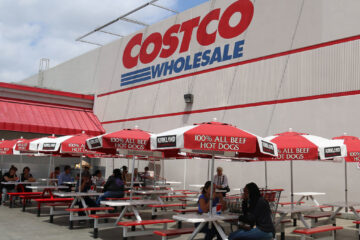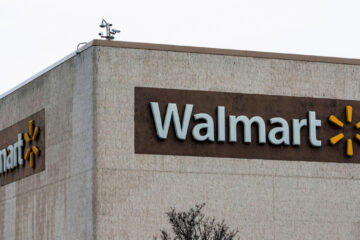Imagine getting a Chipotle bowl without the freshly made guacamole. The meal would not taste the same, and the ingredients would have nothing to hold them together when dipping them in a chip.
Although the extra guacamole costs around $2.65 to $4 depending on the location, the costly addition is always worth the splurge.
💰💸 Don’t miss the move: SIGN UP for TheStreet’s FREE Daily newsletter 💰💸
As good as avocados may be, they are a pricey delicacy. Even though the cost is still manageable, how much more are clients willing to pay for the extra guacamole if the price is already high enough?
Related: Chipotle makes changes to end portion scandal
On Feb. 1, President Donald Trump announced 25% tariffs on all goods imported into the U.S. from Canada and Mexico and 10% on China, which were set to go into effect on Tuesday.
However, after speaking with the countries’ leaders on Monday to potentially reach an agreement, President Trump paused the anticipated tariffs on Canada and Mexico for a month to negotiate further.
Most companies are concerned about the negative financial repercussions that the Trump tariffs might bring on their businesses and have started to make changes in their supply chains to mitigate the damages.
On the other hand, Chipotle claims it’s not worried about the effects these tariffs might have on its most iconic ingredient despite the uncertainty of potential price increases.
An employee prepares a burrito bowl at a Chipotle Mexican Grill Inc. location.
Chipotle claims it’s not worried about the Mexican avocados used to make its famous guacamole
Chipotle (CMG) gets 50% of its avocados from Mexico, and the second half is sourced from other Latin American countries, including Colombia, Peru, and the Dominican Republic.
Although that might seem like a pretty large percentage, only 2% of Chipotle’s total sales come from Mexican imports, including avocados, tomatoes, limes, and peppers. And less than 0.5% come from Canada and China.
“If the recently announced tariffs go into full effect, it would have an ongoing impact of about 60 basis points on our cost of sales. Also, we remain confident that we can offset the 60-basis-point portion investment we made in 2024. Recently, we have started to see the impact eased slightly as we expected,” said Chipotle CFO Adam Rymer in an earnings call.
Related: Major tequila company makes huge tariff announcement
In previous earnings calls, Chipotle said it has been trying to source more avocados from outside of Mexico. Considering that around 88% of avocados sold in the U.S. come from California, reducing its reliance on imports from Mexico is not as complicated as it may seem.
Additionally, when budgeting for avocados, Chipotle’s estimated cost was predicted to be higher than what it actually was in the most recent quarter, effectively keeping the company in line with its avocado expenses.
Chipotle also recently raised its menu prices by 2% this past December due to inflation and price surges in its main ingredients so it could increase its portion sizes after the company received backlash from customers.
Chipotle reveals its guidance for the upcoming quarter but fails to account for important issues
Although Chipotle claims it’s not worried about the effects of the Trump tariffs on its finances, its guidance might prove otherwise, as it estimated the cost of sales inflation to be in the low single digits.
However, the guidance doesn’t include the impact of the new tariffs on ingredients imported from Mexico, Canada, and China or the 60 basis point portion investment.
More Retail News:
China blacklists American clothing brand over shocking claimsPopular beauty brand makes startling announcement about mass layoffsDisney loses thousands of streaming subscribers for a surprising reason
Nonetheless, Chipotle’s budgeting and timely price increase might prevent the company from being affected by the Trump tariffs, at least for the rest of 2025, since it has more financial room to expense the potential tariffs.
Although Chipotle stated that the 2% price increase will be carried out through December of this year, it didn’t mention whether menu prices would increase again in 2026.
Related: Veteran fund manager issues dire S&P 500 warning for 2025


